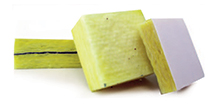Offshore Commercial Vessels
Offshore commercial vessels are diverse, and different types may face very different noise reduction challenges. For cruise liners, cruise ships and tourism-oriented vessels, there are concerns around privacy, comfort. For vessels shipping containers or other goods, noise levels may focus on safety and effective communication – plus the health of those on board for a longer period of time. That means meeting a lower threshold, but does make basic noise mitigation vital to the function of the vessel.
The best tactic with a vessel of this kind is to contact us and speak with one of our audio experts / planners. Many of the best ideas may be in response to very specific aspects of your vessel – things that are different from others, even those that seem similar.
For a few suggestions, here are some common areas of focus and treatments for offshore commercial vessels, attacking both structureborne and airborne noise transmission.
Treatment: Engine noise and vibration
Path: Structureborne
Source: Engine
Improved areas: Entire vessel. Engine room placement is different in different vessels – where engine noise is most disruptive also varies with your boat’s architecture.
Problem: Engines are generally installed with attention to thrust performance (not vibration) using hard mounts. These can be replaced to make an allowance for noise reduction.
- Engine mounts. Soft mounts on an engine that’s directly connected to your propulsion will absorb vibrational energy – on big engines, this can add up to significant noise reduction. If there’s space, your best bet is a remote engine with RD Conical Mounts and highly flexible couplings. Our experts create specifications based on your vessel – the service is included when you order a noise reduction solution or have your engine more effectively mounted.
Specifications
Treatment: Engine Exhaust
Path: Structureborne
Improved areas: Entire vessel, particularly areas closest to the smoke stack or exhaust path.
Problem: High powered engines often have a stack exhaust configuration that channels exhaust – and very high-energy vibration – through the center of the vessel.
Solution: Strategic isolation of the exhaust system. To offset the high degree of energy transfer to the structure, you can deploy exhaust mounts that absorb vibration. Our experts mathematically generate a combination of hard mounts, flexible mounts and bellows that minimize the amount of vibrational energy getting transferred into the hull. That includes specifying the most effective distances and mounting points for your configuration. See more about exhaust systems.
Treatment: Engine Room Insulation
Path: Airborne
Source: Engine / Engine Space
Improved areas: Everywhere, but most noticeable in spaces closer to the engine.
Problem: Once you’ve dealt with the intense vibrations caused by your engines, there is still airborne sound from the machinery which can travel through the vessel.
Solutions:
- Overhead Insulation: Fiberglass incombustible hull boards are a basic but appropriate and effective solution. Often we install 4” of insulation – two 2” boards without mass layers, one with a facing and one (the first one applied) without.
- Best Bet: If you have room, 1 unfaced 2” thick hullboard partnered with a 2” composite with a lead mass layer and a facing will produce the best results.
Specifications
- Best Bet: If you have room, 1 unfaced 2” thick hullboard partnered with a 2” composite with a lead mass layer and a facing will produce the best results.
- Bulkheads: If they lead to occupied spaces, the bulkheads or hull sides can also be treated, typically with hullboards that do not contain lead mass layers. Damping tiles on the forward bulkhead also help if there are below-deck accommodations forward of the machinery space.
- Deck: 3/8” or 5/8” damping tiles bonded to the main deck can make a real difference – typically you want to have 70% coverage of the deck.
- Interior Spaces: In interior spaces, beyond the traditional solution of sleeping with ear protection (not for pleasure vessels, of course). QuietCore and Sylomer are common solutions in the galley, lounge and staterooms, where their valuable insulation improves privacy between cabins while also reducing engine and ambient noise pollution. If you really want to improve habitability, you can also install a floated interior. More.



